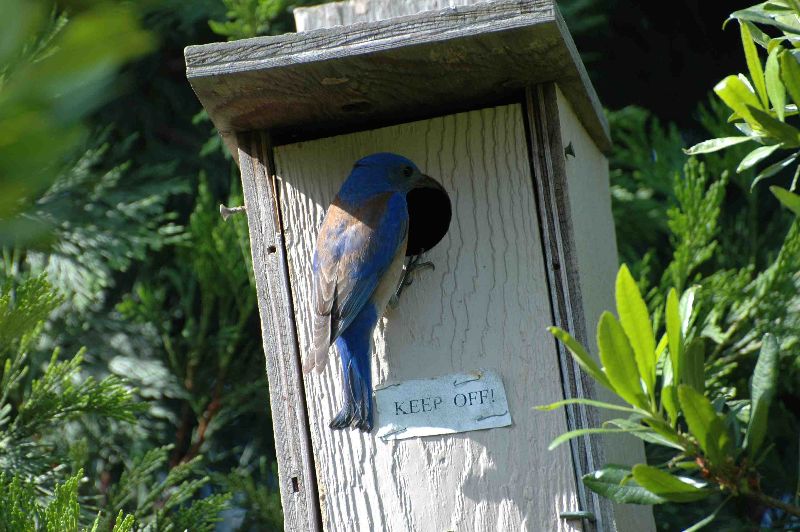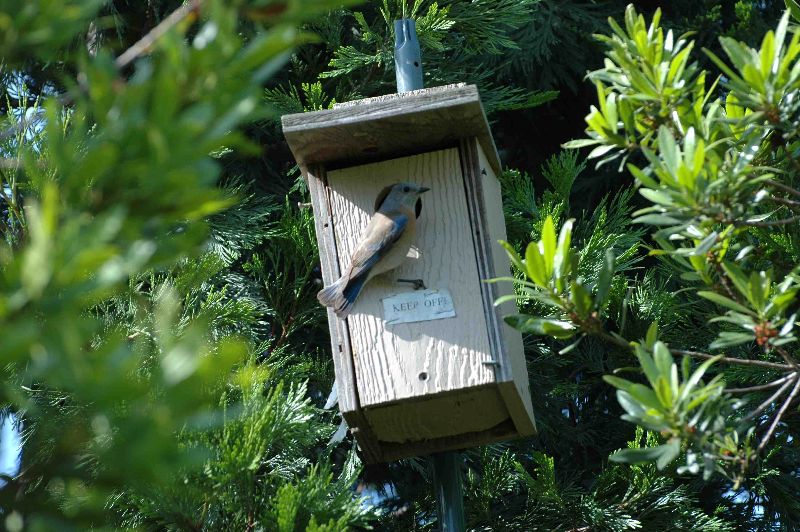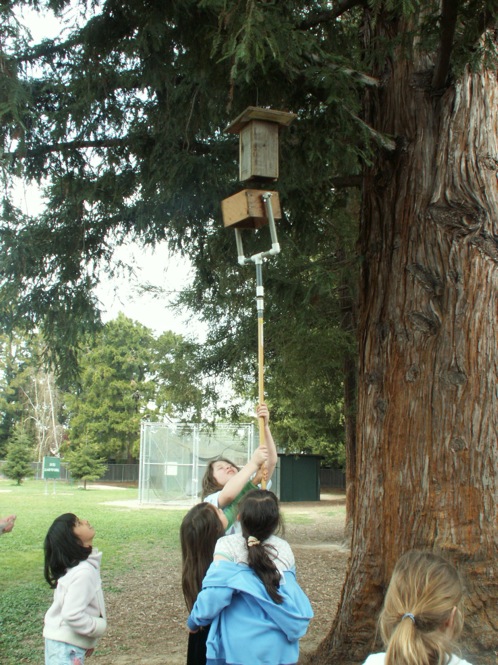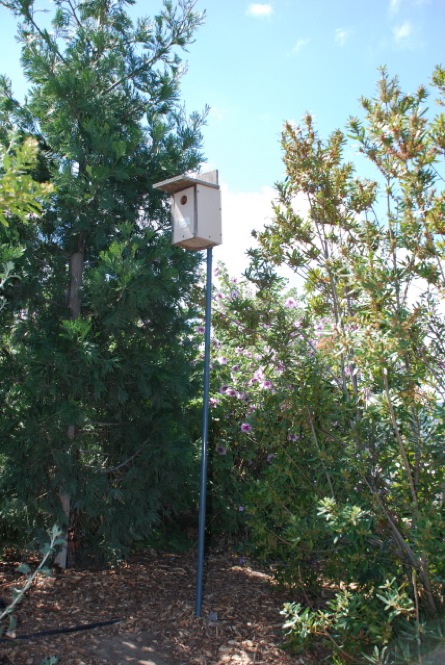Have you ever wondered about the nesting boxes scattered around the Oak School campus? We have our very own “bluebird trail” of nesting boxes as part of the California Bluebird Recovery Program. Installed in 2006 and maintained by the Garden/Nature Club, our nesting boxes give birds a place to build a nest and raise their young.
While some birds build nests in trees, “cavity nesting” birds build their nests in holes in trees. Different species of birds have different requirements for where they’ll raise their young, but all cavity nesters have been hurt by the removal of older trees and other nesting locations. By putting up nesting boxes, we’re providing a home for native birds such as Oak Titmice, Chestnut-backed Chickadees, wrens, and Western Bluebirds. Here at Oak School, we have 2 bluebird boxes, 4 “chickadee” boxes (in which chickadees, tree swallows, or titmice may nest), an American Kestrel box, and a Barn Owl box.
During the nesting season, the children and the adult leader check the nest boxes once a week during lunch recess. We look up at the kestrel and owl boxes, looking for signs that they’re occupied. We gently peek into the other boxes, and record what we find (nesting material, progress of the nest, etc.). At the end of the season, we’ll report our data back to the California Bluebird Recovery Program.
in 2010, a bluebird pair built a nest and had 4 eggs, and we believe they successfully raised 4 fledgings. Frequently at Oak School and in our neighborhood, we observe Western Bluebirds hunting insects, sitting on fences, and flying around. Maybe some of these were born in our Oak School nestboxes!!!
Frequently at Oak School and in our neighborhood, we observe Western Bluebirds hunting insects, sitting on fences, and flying around. Maybe some of these were born in our Oak School nestboxes!!!
Look for bluebirds:  in the Oak School Creative Play Garden, Oak School baseball field and backstop, Mountain View High School baseball fences, homes at the corner of Oak and Marlbarough and at Marlbarough and Wessex. Have you seen them? can you distinguish between female and male birds? A male Bluebird is in the left picture; a female bird in the right.
in the Oak School Creative Play Garden, Oak School baseball field and backstop, Mountain View High School baseball fences, homes at the corner of Oak and Marlbarough and at Marlbarough and Wessex. Have you seen them? can you distinguish between female and male birds? A male Bluebird is in the left picture; a female bird in the right.
IMPORTANT: please do not open the nest boxes or disturb them. The birds will not feel safe if we intrude on them too closely or too often, and we don’t want them to abandon their nests. Bluebirds can tolerate human activity as we play soccer and baseball, explore the native plant garden, etc.—but please be careful not to disturb/molest them. Teach your children to observe the birds, learn together about their habits and homes—and join us on Wednesday at lunchtime if you’d like to peek inside.
If you’d like to learn more about cavity nesters, or are interested in putting up nest boxes in your own yard, there’s help available:

